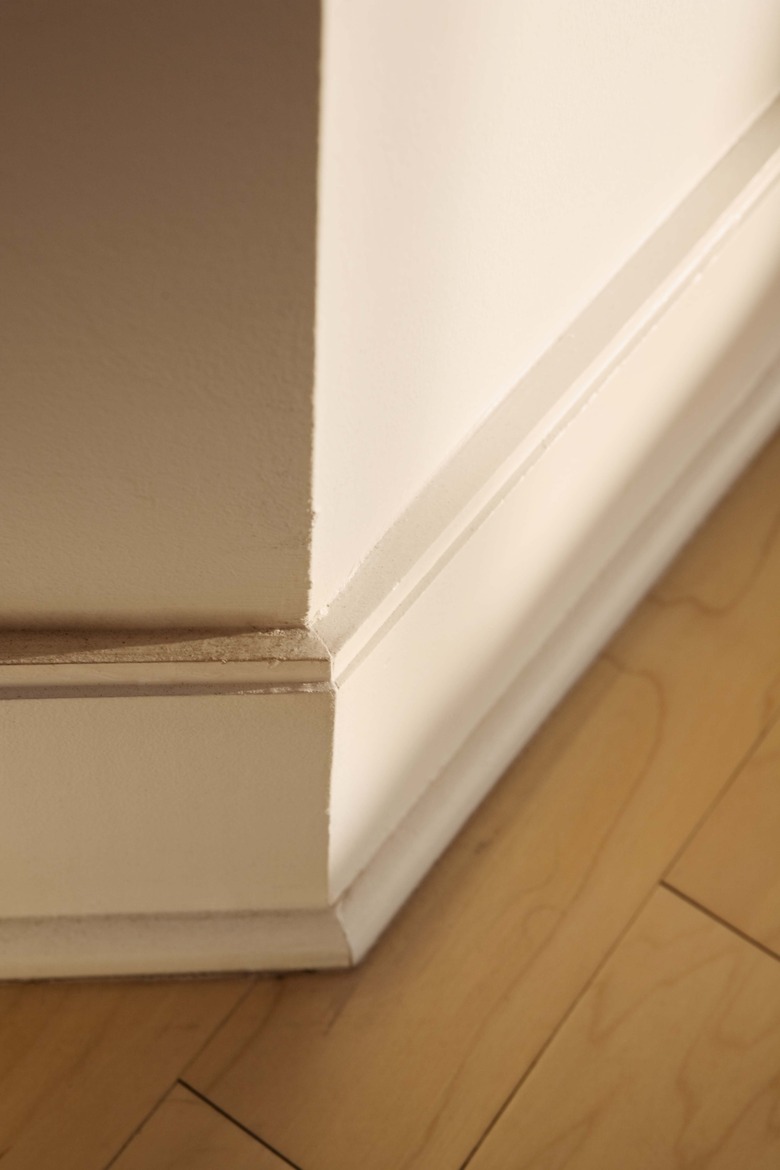Filling In The Gap Under The Baseboard After Ripping Up The Carpet
Carpet installers often tuck the ends of the carpet under the baseboards for a clean, finished look. When this carpet is removed and replaced with hardwood, vinyl or other floor coverings, you might spot a gap between the bottom of your baseboards and your new floor. Filling in this gap, or gully, not only keeps dirt and dust from collecting around the edges of the room, but it also helps your new floor covering look its best.
Quarter Round
Quarter Round
To cover a gap below your baseboards, consider adding a length of quarter round molding in front of the existing baseboards. Not only will this economical and easy-to-use material cover the gap, but it also adds layers and detail to your molding for extra visual appeal. There's no need to remove or modify the existing base if you choose this strategy. Instead, simply pick up some quarter round trim, which generally measures about 3/4 inch high and can be found at any hardware or home improvement store. Cut it to length using a miter saw to angle the ends, then use finish nails to attach it to the baseboard, making sure not to nail into the floor itself. Use wood putty to fill the nail holes, then paint or stain to match your existing floor boards.
Other Add-On Base
Other Add-On Base
If the gap between your floor and baseboards is too large, quarter round might not be enough to cover the gap. Instead, choose a shoe molding, which tends to be taller than quarter round, but requires the same basic installation techniques. For different profiles and design options, consider door or window stops, which can measure one inch or taller in height to hide even the largest gap. Just as with quarter round, these trim pieces should be nailed to the baseboards, not the floor.
Caulk
Caulk
If you're more concerned about dirt collecting or insect infiltration than looks, consider using caulk to fill the gaps beneath your baseboards. Line the floor with blue painter's tape first to minimize messes, then apply a paintable latex silicone caulk to the gap. Paint the caulk to match the baseboards, if you wish, or leave it unpainted.
Replace the Base
Replace the Base
If you don't want to add an extra layer of base and your gaps are too big to caulk, you may have to replace your base. Use a putty knife to gently pry the base away from the wall, then pull it the rest of the way out using your hands. If you can't remove it, use a pry bar to carefully pry the base away from the wall. Pick a slightly taller base than your existing one to eliminate the need to repaint the lower part of the wall and simplify the job. If you're using standard 4-inch vinyl base, look for manufacturers that make 4 1/2-inch base designed just for this purpose. If you're using wood base, you'll find plenty of sizes and profiles to meet your needs. Use finish nails to secure wood base to the wall, or glue vinyl base in place using the manufacturer's recommended adhesive.
Insulation
Insulation
If you feel a draft coming from the gap between your baseboards and floor, add insulation to seal air leaks and improve efficiency and comfort. For larger gaps, you may be able to stuff lengths of door and window weatherstripping under the base. Fill smaller gaps using spray foam insulation, and protect the floor around the base with painter's tape for easier cleanup. After you've insulated, cover the gaps with quarter round or other molding as desired, or leave the insulation uncovered in unoccupied rooms, like a basement.
References
- HardwoodInstaller.com: Caulk Gaps Under Bottom Of Baseboards
- Fine Homebuilding: What's the Difference? — Paintable Caulk
- The Complete Photo Guide to Home Repair; Black & Decker
